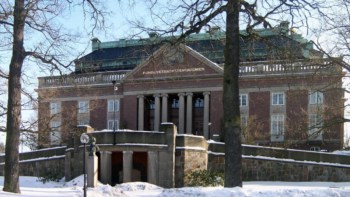A major German synchrotron radiation facility could soon be dismantled - and rebuilt from scratch in the Middle East. The BESSY-1 source in Berlin is due to close at the end of the year, and Germany plans to donate the facility to Middle-Eastern scientists to help boost science and technology across the region. Cyprus, Egypt, Iran, the Palestine Authority and Turkey all expressed an interest in hosting the facility at a meeting to discuss the project held in Paris last month. The new lab could be ready by 2003.
“The meeting was extraordinarily successful in helping to bring people together,” says Siegbert Rather, director for physical sciences at the United Nations Educa-tional, Scientific and Cultural Organization (UNESCO), which organized the event. “There was a resounding ‘yes’ to take the project forward.” Some 70 participants attended the meeting, including delegates representing governments from the Middle East, Germany and Sweden, as well as scientists and representatives from UNESCO and BESSY-1 itself.
The plan is to rebuild and upgrade BESSY-1 so that it produces “hard” photons at wavelengths of about 1 Ångstrom. This will make the machine ideal for research in structural biology and environmental science. “In fact, the new facility would be on a par with bigger machines, such as the National Synchrotron Light Source at Brookhaven in the US,” says Gustav-Adolf Voss, a former director of the DESY particle-physics lab in Hamburg and one of the driving forces behind the project. The rebuilt source would be a world-class regional facility, available to scientists from throughout the Middle East and beyond.
The idea of donating the synchrotron came from Voss and his colleague Herman Winick from the Stanford Linear Accelerator Center in California. “We were at an advisory committee meeting for the new BESSY-2 source in Berlin and were discussing what should happen to BESSY-1,” explains Voss. “The German government cannot support two synchrotron labs so close to one another, so we approached some Israeli and Arab scientists about our idea.” The Middle East Scientific Collaboration – a network of scientists promoting scientific co-operation between Europe, the US and the Middle East – then heard about the proposal and discussed the idea at a meeting in Sweden last year.
However, Raither warns that the German government will want to receive assurances from the potential host that the new facility will be properly supported before donating the BESSY-1 source. “It won’t want the project to become a white elephant,” he says. Germany would also prefer the project to be under the umbrella of an international organization like UNESCO.
An interim council, under the auspices of UNESCO, was set up at the Paris meeting to move the project forward. It will be headed by Herwig Schopper, a former director-general of the CERN particle-physics lab. Committees to consider the scientific, technical, financial and training aspects of the project have also been formed. Countries interested in hosting the facility are required to declare their interest by the end of the month. The council hopes to receive formal proposals by November, which would allow it to make a final decision by the end of the year. “Then the real work can begin,” says Raither.
If the plan goes ahead, the 800 MeV beam-injection system, the beamlines, the bending magnets, the power supply and the detectors would be shipped to the new site and rebuilt. However, the control system, the vacuum system, and the radio-frequency system, which accelerates the electrons after they have been injected into the ring, would all have to be upgraded or replaced from scratch.
Voss thinks that it would take up to two years to build the infrastructure for the new lab, including the experimental halls and the cooling towers. Another year would then be required to install the machine. “If everything goes to plan, the machine could come on-line by 2003.” The annual running costs of the facility will be about $3.5m, plus salaries.



